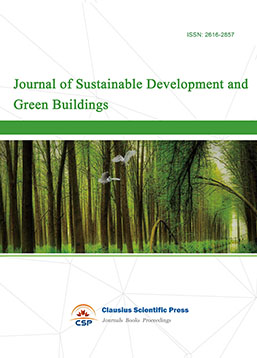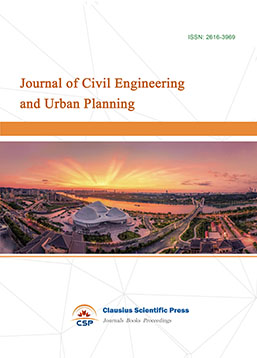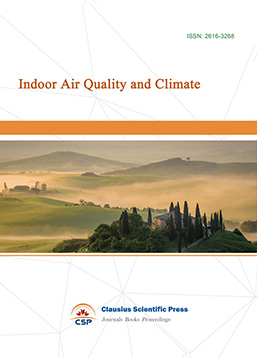Restoration Design of "Siming Cave Day" in Zhenyin Garden of Southern Song Dynasty
DOI: 10.23977/lsuh.2024.060116 | Downloads: 15 | Views: 1043
Author(s)
Jialin Ni 1, Zihui Qu 1, Shuxin Zhang 1, Qingyang Chen 1
Affiliation(s)
1 School of Design, Art and Architecture, Zhejiang Wanli University, Ningbo, China
Corresponding Author
Qingyang ChenABSTRACT
During the Southern Song Dynasty, as a stage of cultural prosperity and high development of garden art in Chinese history, many exquisite private gardens emerged. Among them, "True Hidden Garden" and its core landscape "Siming Dongtian" are famous for their unique landscape layout, profound cultural deposits and recluse ideas, which have become precious samples for later generations to study Song Dynasty garden art. However, with the change of history, the true Yin Garden and its "Siming Cave sky" have no longer been the original appearance, leaving only documentary records and scattered relics, which attract unlimited imagination. This paper aims to carry out a scientific and reasonable restoration design of "Siming Dongtian" through in-depth research on the historical background, cultural characteristics, garden design concepts and relevant documents and materials of "True Hidden Garden" in the Southern Song Dynasty, combined with modern archaeological discoveries and garden restoration techniques, in order to reproduce its former glory and provide a new perspective and inspiration for contemporary garden art, historical and cultural research and tourism development. In the process of restoration design, the aesthetic orientation, spatial layout, plant configuration and architectural characteristics of the gardens in the Southern Song Dynasty were analyzed in detail to build a restoration framework that conforms to the historical landscape. In the design, attention is paid to the interlocking and tortuous spatial layout of mountains and rivers, and modern gardening technology is used to simulate natural mountains and rivers, creating the artistic conception of ink painting. At the same time, the restoration design emphasizes the in-depth excavation and display of cultural connotation. By restoring the cultural elements such as pavilions, stone inscription forests, poetry couplets and other cultural elements in the "Siming Cave Sky", it not only restores its material form, but also inherits its spiritual connotation, so that tourists can feel the secluded feelings and elegant taste of the intellectuals of the Southern Song Dynasty during the tour.
KEYWORDS
True Yin Garden of Southern Song Dynasty; Siming Dongtian; Landscape designCITE THIS PAPER
Jialin Ni, Zihui Qu, Shuxin Zhang, Qingyang Chen, Restoration Design of "Siming Cave Day" in Zhenyin Garden of Southern Song Dynasty. Landscape and Urban Horticulture (2024) Vol. 6: 111-121. DOI: http://dx.doi.org/10.23977/lsuh.2024.060116.
REFERENCES
[1] Yuan Le, Li Zhi. Artistic Features of Gardens in Southern Song Dynasty[J]. Journal of Landscape Research, 2020, 12(05) :87-89+93.
[2] Ridgway, Benjamin. Southern Osmanthus and Northern Pear: The Garden of Xiang Ziyin as a Site of Memory in the Writings of Southern Song Literati[J]. Journal of Chinese Literature And Culture, 2017, 4(01):19-55.
[3] Yujia C, Yang G, Yaxin L, et al. Unveiling the dynamics of "scenes changing as steps move" in a Chinese classical garden: a case study of Jingxinzhai Garden[J]. Heritage Science, 2024, 12(1).
[4] Feng Pan, Wenqi Wan. Ecological Waterscape Design Based on the Culture of China's Classical Gardens. [J]. Architectural Engineering (Chinese and English), 2014, 2(04):73-77.
[5] JIANG Jinling. Artistic Conception of Chinese Classical Gardens[J]. Journal of Landscape Research, 2021, 13(05):87-89+92.
[6] Kang, Qi, Huang, Mingjin. The mountain-viewing trend in private gardens of the Song dynasty[J]. Studies In The History Of Gardens &Amp; Designed Landscapes, 2023, 43(04):343-351.
[7] Chiu, Y. H.,Wang, K. F., Lin, S. W. Thermal Comfort, Visibility, And The Spatial Layout In Classical Gardens Of Suzhou, China[J]. Applied Ecology and Environmental Research, 2023, 21(03):1991-2009.
[8] Li Li, Qian Zeyu, Ju Ping, et al. The Application of Plant Culture in Architectural Decorations of Classical Gardens of Yangzhou[J]. Journal of Landscape Research, 2018, 10(06):118-122.
[9] Ding, Mingjing, Zhang, Qingping, Li, Gang, et al. Fractal dimension-based analysis of rockery contour morphological characteristics for Chinese classical gardens south of the Yangtze River[J]. Journal Of Asian Architecture And Building Engineering, 2023, 22(05):2490-2505.
[10] Zhang Jing, Zhang Jin, Li Chang. Analysis of Waterscape Engineering Skills of Classical Chinese Gardens[J]. Journal of Landscape Research, 2020, 12(03):9-14.
| Downloads: | 1601 |
|---|---|
| Visits: | 98179 |
Sponsors, Associates, and Links
-
Journal of Sustainable Development and Green Buildings

-
Bridge and Structural Engineering

-
Soil Mechanics and Geotechnical Engineering

-
Journal of Civil Engineering and Urban Planning

-
Journal of Municipal Engineering

-
Heating, Ventilation and Air Conditioning

-
Indoor Air Quality and Climate

-
Computer Aided Architecture Design


 Download as PDF
Download as PDF